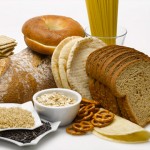One recommendation made by nutritionists and some women who have Endometriosis is to go gluten-free.
This, they suggest, will help in relieving the symptoms of Endometriosis. But what is gluten exactly? It’s only been two years since I’ve heard of the term “gluten-free”…and like some of you, I was like “gluten what?” But with the pain I was feeling since my laparoscopy, I was prepared to try anything given that I am such a foodie!
CASE STUDY
Pelvic pain in women accounts for 10-40% of all gynecologic office visits. A new research study found that the gluten free diet led to dramatic pelvic pain reduction in women suffering with endometriosis – begging the question – “Is endometriosis a manifestation of non-celiac gluten sensitivity?” Below is an excerpt from the study…
“At 12 month follow-up, 156 patients (75%) reported statistically significant change in painful symptoms (P<0.005), 51 patients (25%) reported no improvement of symptoms. No patients reported worsening of pain. A considerable increase of scores for all domains of physical functioning, general health perception, vitality, social functioning, and mental health was observed in all patients (P<0.005).
CONCLUSION: In our experience, painful symptoms of endometriosis decrease after 12 months of gluten free diet.”
So what is gluten and where is it exactly?
Gluten is a mixture of proteins in wheat, rye and barley. Common foods that contain gluten are those with flour in them (white or wheat). It actually gives elasticity to dough which helps it to rise and keep its shape. Some examples of everyday items that contain gluten:
- Pizza
- Pasta
- Crackers
- Most cereals
- Bread
- Bagels
- Cookies, cakes and most other baked goods
- Beer
But here are some grains and starches that you can safely eat that do not contain gluten:
- Arrowroot
- Beans
- Chickpeas
- Corn
- Millet
- Potato
- Quinoa
- Cassava
Remember that gluten is in wheat, rye and barley…so when looking at food labels, if a food label says it is wheat-free, there’s still a possibility that gluten is present in other ingredients…e.g. malt which is derived from barley.
So to go gluten-free, it’s important to learn about the obvious and not-so-obvious gluten culprits.
Stay tuned for more information on going Gluten-Free.
– Nuff Love
Shauna




3 Comments
I learnt so much today. Thank you for sharing.
I need to watch some of these food I intake each day!
Thanks!
Tell me more , so that i can share more. thank you.